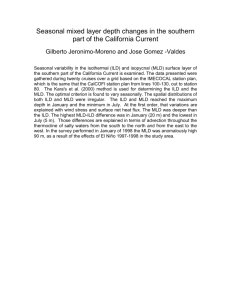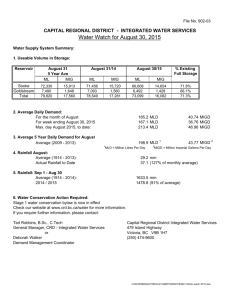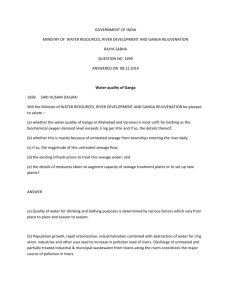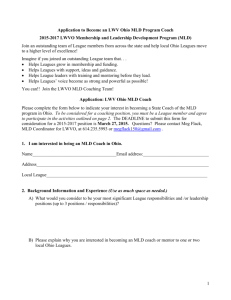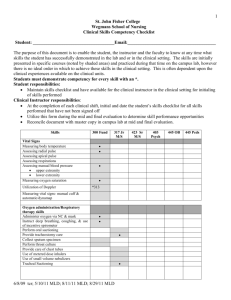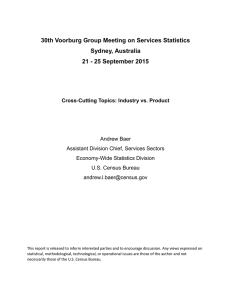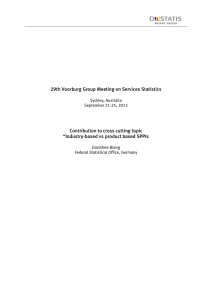Topic 1: Manufacturing Systems
advertisement
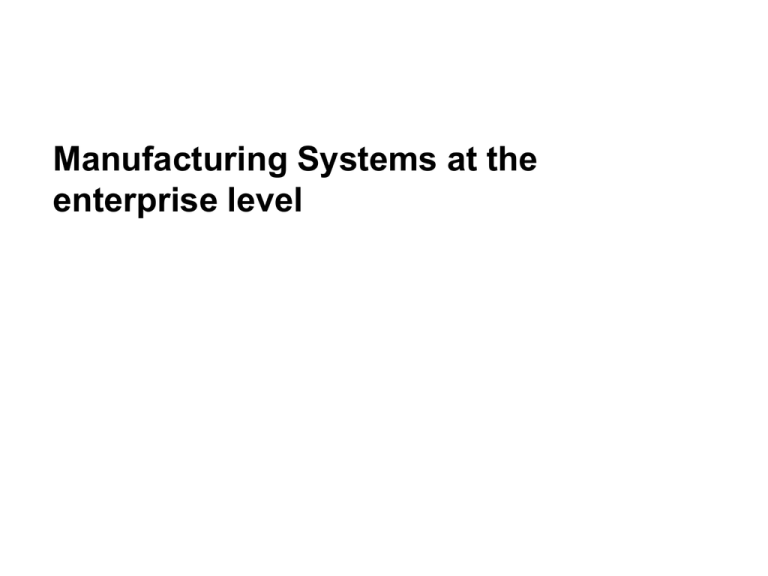
Manufacturing Systems at the enterprise level What is called manufacturing system ? System: a set of components that are connected in a rational way to perform functions. Manufacturing systems are a system to make products. So making a product is the function of a manufacturing system. Resources are needed for a system to perform a function. Environments are needed for a system to perform a function. Manufacturing firms are a profit-based organization, so they have to consider the cost of making a product and the return they can get from selling their products Manufacturing Systems: three levels Logical (for each manufacturing firm or entity or system): Firm level Shop floor level Machine level All our previous discussions are at the machine level. A machine is considered as a system that processes materials to make a product Manufacturing Systems: three levels Physical (for each manufacturing firm or entity or system): Firm level Shop floor level Machine level A manufacturing system can be one person with one machine. In this case, the three levels are flattened into one but this one physical entity has three logical functions. Firm view of manufacturing systems Finance or money Environment Materials Capital equipment Production tooling Energy Manufacturing Systems along with its process, e.g., business of repairing Sustainability Resilience Labor Health& Safety Completed product Scraps or wastes Classification of manufacturing systems (firm level) (1) project, (2) job shop, (3) repetitive, (4) line and (5) continuous Manufacturing systems at the enterprise level Project: One of a kind (such as ship and nuclear power plant) Complex Site building (production tools must get to the site) Job Shop: Low volume and production quantities, called lot sizes Not site building (traditional workshop) Manufacturing systems at the enterprise level Process-based layout Product-based layout Repetitive: Orders for repeat business approach 100%. Blanket contracts with customers for multiple years occur frequently. Moderately high volume with lot sizes varying over wide range. Fixed routing for products. Remark: The system or plant is laid down in either processbased or product-based flow manner. Manufacturing systems at the enterprise level Line: Delivery time (often called lead time) required by the customer is often shorter than the total time it takes to build the product. Product has many different models and options. An inventory of subassemblies is normally present. Examples: Car and Truck. System is laid down as a product-based flow manner. Manufacturing systems at the enterprise level Continuous: Manufacturing lead time is greater than the lead time quoted to the customer. Product demand is predicable. Product inventory is held. Volume is high. Products have few options. Examples: Chemical components. System is laid down in a product-based flow manner. Characteristics of manufacturing Systems Production strategy classification To deals with how to market the product Criteria for classification: customer lead time (CLD) and manufacturing lead time (MLD) Engineer to order: Product is either in the first stage of the life-cycle curve or a complex product with a unique design produced in single-digit quantities. Example: construction industry (bridge, etc.) Customer is willing to accept long MLD - permitting this strategy Make to order: All the engineering and design works are completed and the production process is proven. Example: new residential homes. The customer’s demand is unpredictable. Assemble to order: Primary reason of this strategy: MLD > CLD. Order is statistically predicable. Examples; automobiles, personal computers This strategy is especially adopted in the manufacturing type line Make to stock: - Reasons for this strategy: (1) CLD < MLD (2) product configuration has few options so that the demand can be predicated accurately. - Product parts are often stocked in distribution warehouses located in major population centers. Production strategy versus MLD: Maximal MLD : ETO Minimal MLD : MTS Manufacturing systems at the enterprise level It is important to be aware that the production strategy can be changed with the product evolution. MTO may not suit the product which has a high component of R&D; however MTO may be applied when that product goes to maturity. Enterprise organization Architecture Aim: examine different function units and their communications Manufacturing organization see Figure 1.6 where boxes represent different function units and arrowhead lines indicate the communications. Figure 1.6 Product and Process Definition (Figure 1.7) Finance and management Sales and Marketing Product Product Design design Production Production engineering Engineering Engineering release Manufacturing planning and control Quality Quality Manufacturing planning and control (See Figure 1.8) Manufacture process planning determine the type of machines required to process the parts and the production sequence, called the routing, to be used Production planning -> scheduling (time factors included) Manufacturing Planning and Control (MPC) MPC versus others Production sequence Manufacturing systems at the enterprise level
